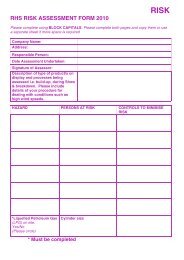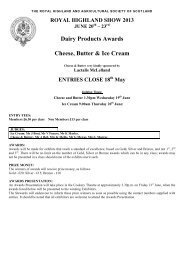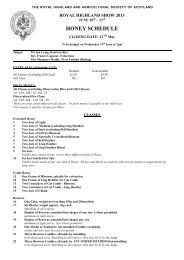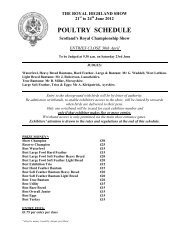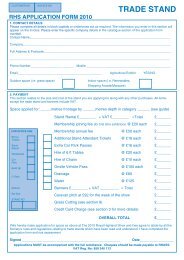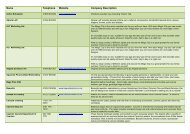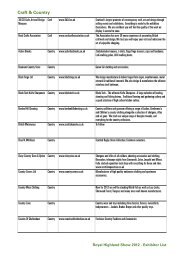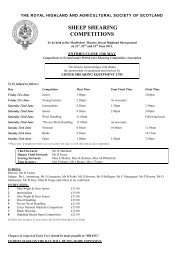general risk assessment guidance notes - Royal Highland Show
general risk assessment guidance notes - Royal Highland Show
general risk assessment guidance notes - Royal Highland Show
You also want an ePaper? Increase the reach of your titles
YUMPU automatically turns print PDFs into web optimized ePapers that Google loves.
obligations to develop a <strong>general</strong> framework for safety management and enhance anycontrol measures provided.The main provision of the Regulations is the need for an employer to conduct <strong>risk</strong><strong>assessment</strong>s of his work activities and to identify the action needed to control the healthand safety <strong>risk</strong>s in the workplace.The <strong>assessment</strong> of hazardous operations will not just be a paper exercise divertingscarce management resources from the business of managing. It will be a practicalexercise taking the opportunity to review and evaluate operations and seekimprovements.What is Risk Assessment?A hazard is something which has the potential to cause harm, e.g., a substance,machine or situation, such as working at heights. A <strong>risk</strong> is the likelihood that the harmwill occur combined with its severity (i.e., the number of people likely to be affected andwhether the hazard would cause minor or major injuries or even a fatality). Risk<strong>assessment</strong> is an evaluation of the chance that harm will occur.Conducting Risk Assessments1) Hazard spotting -Appoint a small group (usually 3 persons) to walk round theworkplace and look at what could cause harm, concentrating on significant hazardswhich could have severe consequences.During the walk round ask employees for their opinions and what they consider to besignificant. The use of accidents/ill health records and manufacturers' instruction/ datasheets can aid in your hazard spotting.2) Decide who might be harmed and how. You need to consider not only employees butalso people who may not always be present in the workplace, e.g., cleaners, visitors,delivery personnel, contractors, maintenance workers, etc.3) Decide for each hazard whether the <strong>risk</strong> is high, medium, low or not significant. Haveyou done everything that the law says you have to? Are industry standards in place?The law says that you must do what is reasonably practicable to keep your workplacesafe.Improving health and safety need not necessarily cost a lot. Some control measures arevery simply implemented with no major restraints on budget. For example, non-slipmaterial on slippery steps.Ask yourself whether you can get rid of the hazard altogether or, if not, how you cancontrol the <strong>risk</strong> so that harm is unlikely.Generally, personal protective equipment will only be used when there is nothing elsereasonably practicable.Preventive and protective measures will be implemented as a result of the <strong>assessment</strong>and these could include such items as avoidance of a <strong>risk</strong> by elimination or reduction




